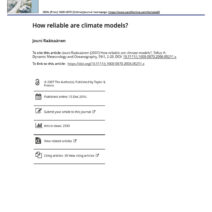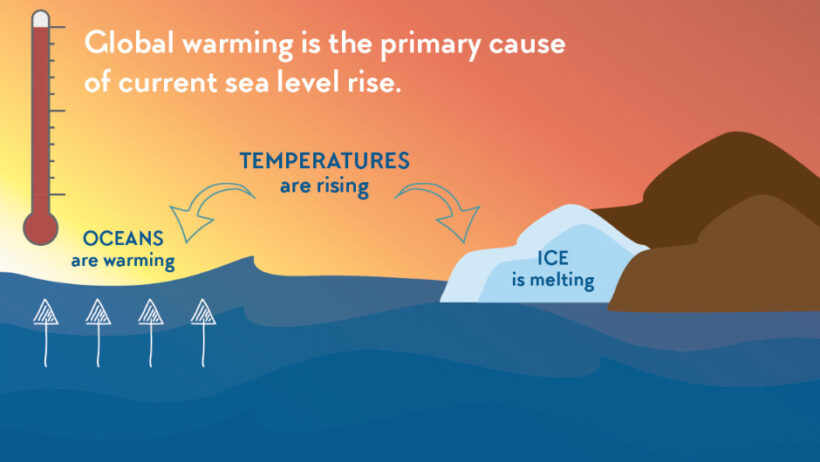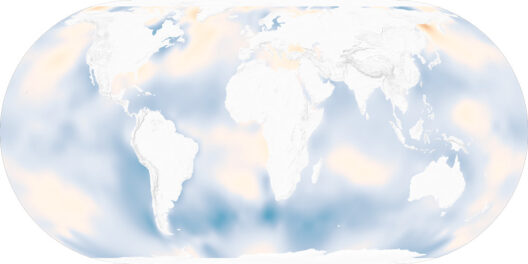Climate change has emerged as an undeniable global crisis that not only threatens ecosystems but also poses significant challenges to human societies. Among the most conspicuous manifestations of climate change is the rising sea levels, a phenomenon that has garnered attention from scientists, policymakers, and communities alike. Understanding the evidence for climate-forced sea level rise necessitates a multifaceted approach, examining a range of scientific data, observational trends, and projections for the future. This article delves into the various types of evidence that substantiate claims of sea level rise attributable to climate change.
1. Satellite Altimetry
One of the primary tools utilized to measure sea-level changes is satellite altimetry. This remote sensing technology utilizes radar to calculate the distance between the satellite and the ocean surface. Since the launch of the TOPEX/Poseidon satellite in the early 1990s, scientists have acquired precise data on sea level trends globally. The observations reveal a consistent and alarming rise in sea levels over the past few decades. Average global sea levels have been documented to rise approximately 3.3 millimeters per year since 1993, highlighting a pronounced increase compared to historical data.
2. Tide Gauges
Complementing satellite measurements, tide gauges have been a stalwart method for tracking sea level fluctuations for over a century. These devices are often strategically positioned along coastlines, measuring the height of the water relative to a permanent benchmark. By reviewing long-term records, researchers can discern patterns that reveal regional sea level changes. Many tide gauge stations have indicated that coastal regions, particularly in the northeastern United States, are experiencing rubber-band-like modifications, with some areas seeing increases exceeding the global average.
3. Ice Sheet Dynamics
Significant evidence for climate-forced sea level rise includes the acceleration of ice sheet mass loss in Greenland and Antarctica. These vast ice sheets are sensitive to temperature increases; as global temperatures rise, so does the rate of ice melt. Satellite data and aerial surveys show that Greenland’s ice sheet is losing approximately 280 gigatons of ice per year, while Antarctica is losing nearly 150 gigatons per year. As these massive bodies of ice continue to diminish, they contribute directly to rising sea levels. The relationship between ice melt and sea level rise is often depicted through computer models, which project alarming future scenarios if current warming trends persist.
4. Thermal Expansion
Another crucial component contributing to sea level rise is the thermal expansion of seawater. As the ocean absorbs heat from the atmosphere, its water volume increases. This phenomenon is particularly pertinent, given that approximately 90% of the excess heat from global warming is absorbed by the ocean. Studies indicate that thermal expansion has accounted for about half of the observed increase in sea levels since the late 20th century. The science of thermal dynamics illustrates that as temperatures rise, ocean waters will continue expanding, leading to further increases in sea levels.
5. Historical and Paleo-Climatology Evidence
Investigations into past climates yield essential insights into future sea-level trajectories. Studies of sediment deposits, coral reefs, and fossil records through the field of paleo-climatology reveal that sea levels have fluctuated dramatically over geological time scales. For instance, during interglacial periods, when global temperatures were higher, sea levels were considerably elevated compared to today. Such historical data provide context for understanding potential future outcomes, underscoring the correlation between global temperature rises and sea level increases.
6. Modeling Projections
Computer modeling plays an instrumental role in projecting future sea-level rise. Climate models simulate various atmospheric and oceanic processes, considering various emissions scenarios. The Intergovernmental Panel on Climate Change (IPCC) generates reports that include projections of sea level rise under different greenhouse gas emission pathways. Presently, models predict that if global temperatures increase by 1.5 to 2 degrees Celsius above pre-industrial levels, sea levels could rise by as much as 1 meter or more by 2100. These models integrate various factors and produce a range of potential scenarios that encapsulate varying degrees of policy action and climate response.
7. Local Impacts and Adaptations
The implications of sea level rise are not uniform; they vary significantly across different geographic regions. Coastal cities, particularly those located on low-lying terrain, face a slew of challenges as water encroaches on urban areas. City planners and environmentalists are investigating adaptive strategies—including sea walls, restoring wetlands, and even managed realignment—to mitigate the risks associated with rising seas. Historical data and contemporary studies underscore that communities must prepare for more frequent and severe coastal flooding, reinforcing the urgent need for dynamic responses to this evolving threat.
8. Public Perception and Policy Implications
A multifaceted understanding of climate-forced sea level rise stretches beyond scientific data into the realm of public perception and policy implications. Awareness and education play pivotal roles in galvanizing action towards sustainable practices. By informing local communities about the evidence and ramifications of sea level rise, stakeholders can encourage proactive measures to combat climate change. Consequently, effective policies must be enacted to address emissions, invest in resilient infrastructure, and uphold environmentally sustainable practices.
In conclusion, a comprehensive assessment of climate-forced sea level rise reveals a plethora of evidence derived from satellite data, tide gauges, ice sheet dynamics, and models. The intricate interplay of these factors paints a stark picture of the consequences of inaction. Future strategies aimed at combating sea level rise must be informed by these findings, compelling societies to adapt, mitigate, and evolve in the face of undeniable environmental changes. The urgency of addressing climate change has never been more pressing, with sea level rise serving as a potent indicator of the broader challenges ahead.





